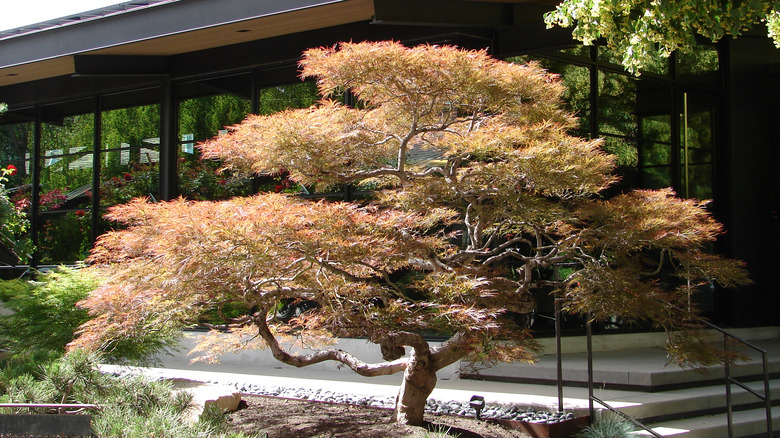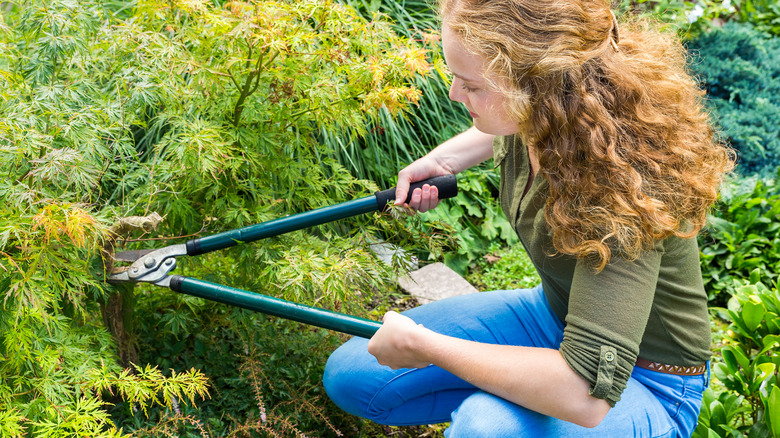Mistakes To Avoid When Trimming A Japanese Maple Tree
You may remember your first glimpse of a Japanese maple tree: dramatic, delicate, and even a bit melancholy, this feathery-leafed beauty leaves a mark on you. This specimen tree's small size keeps the foliage at eye level, and careful pruning helps make this happen. However, pruning adds much more than aesthetic value. Trimming correctly helps the branches develop a strong attachment to the trunk to train them into that lovely shape. UK-based Jackson Nurseries offers two pieces of invaluable advice for pruning Japanese maples: "don't rush, and when in doubt, don't cut."
It's crucial to prune them the right way at the right time, and straying away from these rules can lead to serious damage. Winter is the best time to prune your Japanese maple, but let December be your cutoff point for cutting. Trimming branches later than the end of the month can lead to sap bleeding.
Avoid heartbreaking branch failure and added stress to the tree by trimming conservatively once it has dropped its leaves for the season. For optimal growth, never prune more than 20% of the tree's crown, cut away branches that are more than half the diameter of the trunk, or remove more than 25% of the leaves from any branch. Too much trimming can cause damage to the bark, as less foliage means less sun protection for the trunk and branches. Also, make sure to make cuts no closer than ¼ inch from the stem to allow for safe and pest-free healing.
Trim according to tree type and age
There's a lovely assortment of Japanese maple tree varieties that will bring beauty to your yard, and your trimming technique depends on the kind of growth pattern your tree has. There are two types of Japanese maple growth patterns: upright (Acer palmatum) varieties like 'Bloodgood' that are the perfect addition to your summer landscape; and weeping ones (Acer palmatum var. dissectum), also known as laceleaf maples.
Whichever variety you have, it's best to let your Japanese maple grow without interference for as long as possible. First get out your tools when you see damaged, dying, or dead branches; you'll usually find those at the lower and inner sections of the tree. Make a clean cut, and take your time so that you don't cut nearby branches that you're not targeting. You may also prune drooping branches that obstruct walkways, that touch the ground, or that overlap nearby trees or shrubs. Both types of trees benefit from separating the branch layers, helping to give your tree the typical umbrella-like and well-spaced branches typical of Japanese maples.
Outside of the tips above, the needs of weeping Japanese maples diverge a bit from uprights. Young weeping varieties may sprout unattractive limbs that are too thick or don't branch; these can be trimmed without trouble. Also, weeping Japanese maples tend to have more fragile bark, so keyhole saws are recommended to make those cuts. Finally, some dwarf varieties might be too small to trim into the umbrella shape or layered look you come to expect from a Japanese maple.

